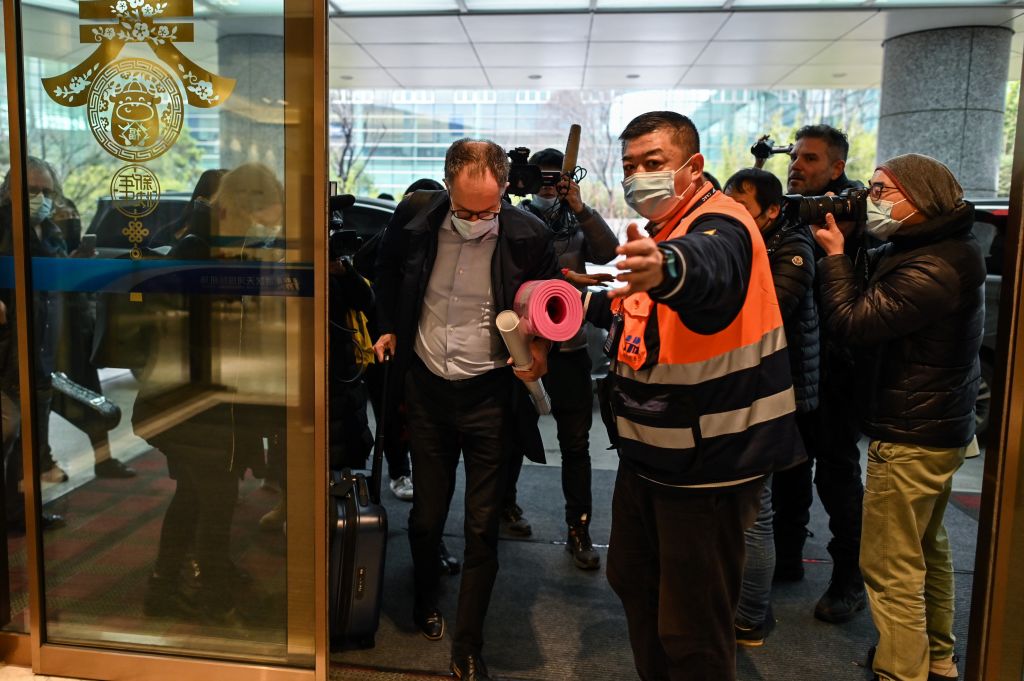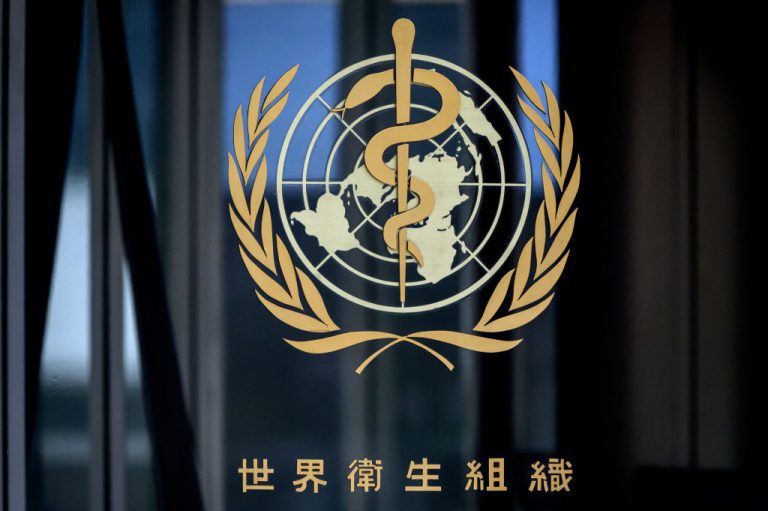The World Health Organization (WHO) says the origins of the SARS-CoV-2 coronavirus, which causes the disease the organization dubbed Coronavirus Disease 2019 (COVID-19), will be known “fairly soon,” according to a statement on March 10 by a WHO representative tasked with determining the coronavirus origin.
Peter Daszak, a member of the team, admitted, however, that “fairly soon” means he’s “convinced we’re going to find out fairly soon within the next few years.”
Daszak, President of EcoHealth Alliance in New York, gave his comments at a press briefing organized by the UK-based Chatham House foreign affairs group in London, where he also reinforced the theory that the virus jumped naturally from humans to bats. “There was a conduit from Wuhan to the provinces in South China, where the closest relative viruses to (the coronavirus) are found in bats.” He claimed that “wildlife trade” was the most likely explanation for how SARS-CoV-2 made its way to Wuhan, according to Associated Press.
Another member of the team, Marion Koopmans, said the WHO’s team visited three laboratories in proximity to Wuhan and “scrutinized their protocols, testing programs and research, among other issues.”
“We concluded that it’s extremely unlikely that there was a lab incident,” said Koopmans.
Success
You are now signed up for our newsletter
Success
Check your email to complete sign up
Koopmans also said their team “cannot completely rule…out” a theory that the pandemic spread from “tainted seafood packaging.”
A Feb. 15 article by the Wall Street Journal’s Editorial Board pointed out concerning conflicts of interest in the WHO’s investigative unit.
The article says U.S. Right to Know, a non-profit, obtained emails showing Daszak had an existing prejudice against the lab leak theory after helping to organize a statement in The Lancet which condemned “conspiracy theories suggesting that COVID-19 does not have a natural origin.” According to WSJ, Daszak said in emails that he did not want the statement to “be identifiable as coming from any one organization or person.”
The AP article noted the WHO’s trip to the notoriously sensitive Communist-run nation was not an easy one, as “team members and itinerary of the trip had to be approved by China.” Daszak himself admitted that the mission was “clouded by politics.”
Koopmans, too, is not without her share of conflict, according to the WSJ. She oversees the viroscience department at Erasmus University Medical Center in Rotterdam, Netherlands. The Editorial Board said of Koopmans, “A decade ago Ms. Koopmans’s deputy, Ron Fouchier, made international news by modifying a deadly flu virus to spread between ferrets.”
The article added, “If an investigation finds it likely that the Covid-19 pandemic was caused by gain-of-function research, that would have repercussions for labs around the world, including at Erasmus MC.”
A separate Feb. 12 WSJ article revealed that the CCP refused to share meaningful raw data with the WHO’s investigators during their stay in the mainland.
The article said the WHO team complained “Chinese officials and scientists provided their own extensive summaries and analysis of data on the cases,” adding “But the WHO team wasn’t allowed to view the raw underlying data on those retrospective studies, which could allow them to conduct their own analysis on how early and how extensively the virus began to spread in China, the team members said.”
Team member Dominic Dwyer, an Australian microbiologist, described what the Party allowed the WHO’s investigators to see, “They showed us a couple of examples, but that’s not the same as doing all of them, which is standard epidemiological investigation.”
“So then, you know, the interpretation of that data becomes more limited from our point of view, although the other side might see it as being quite good,” said Dwyer.
WHO’s Coronavirus origin theory at odds with State Department
The WHO’s assertions come in contrast to a fact-sheet issued by the outgoing Trump administration’s State Department on Jan. 15, which cited several cases of researchers at the Chinese Communist Party’s (CCP) only biosecurity level 4 laboratory, the Wuhan Institute of Virology (WIV), developing symptoms indicative of serious COVID-19 months before the Party admitted there was a problem to the world.
In a Feb. 9 Tweet, Daszak asked readers to not “rely too much on US intel,” calling it “increasingly disengaged under Trump & frankly wrong on many aspects.”
“Happy to help WH w/ their quest to verify, but don’t forget it’s ‘TRUST’ then ‘VERIFY’!” Daszak concluded.
In early February, head of the WHO’s investigation team, Peter Ben Embarek, appeared to preemptively dismiss the theory that the WIV was the source of the virus before his team had even released a report on its findings.

A December 2017 video run on Chinese state-owned television showed researchers from the WIV, including the infamous “Bat Woman” Shi Zhengli, displaying negligent behavior and a lack of personal protective equipment when collecting samples from a cave filled with bats.
The video also appeared to show team members suffering multiple wounds from bat bites during their trip to the cave, calling into question whether the stringent safety measures and protocols required in a biosecurity level 4 laboratory were actually being followed at the WIV prior to the start of the pandemic.
At the end of February, Dr. Roland Wiesendanger of the University of Hamburg and his team published a preprint study definitively stating that he and his team believed a “laboratory accident” was the origin of the world’s exposure to SARS-CoV-2.
In a press release, Wiesendanger and his team said the safety measures at the WIV were “documented as being insufficient at the Wuhan Institute of Virology prior to the outbreak of the coronavirus pandemic,” and that there were “numerous direct indications” of a “young researcher at the Wuhan Institute of Virology” being the first deadly infection.
Follow us on Twitter or subscribe to our email list















